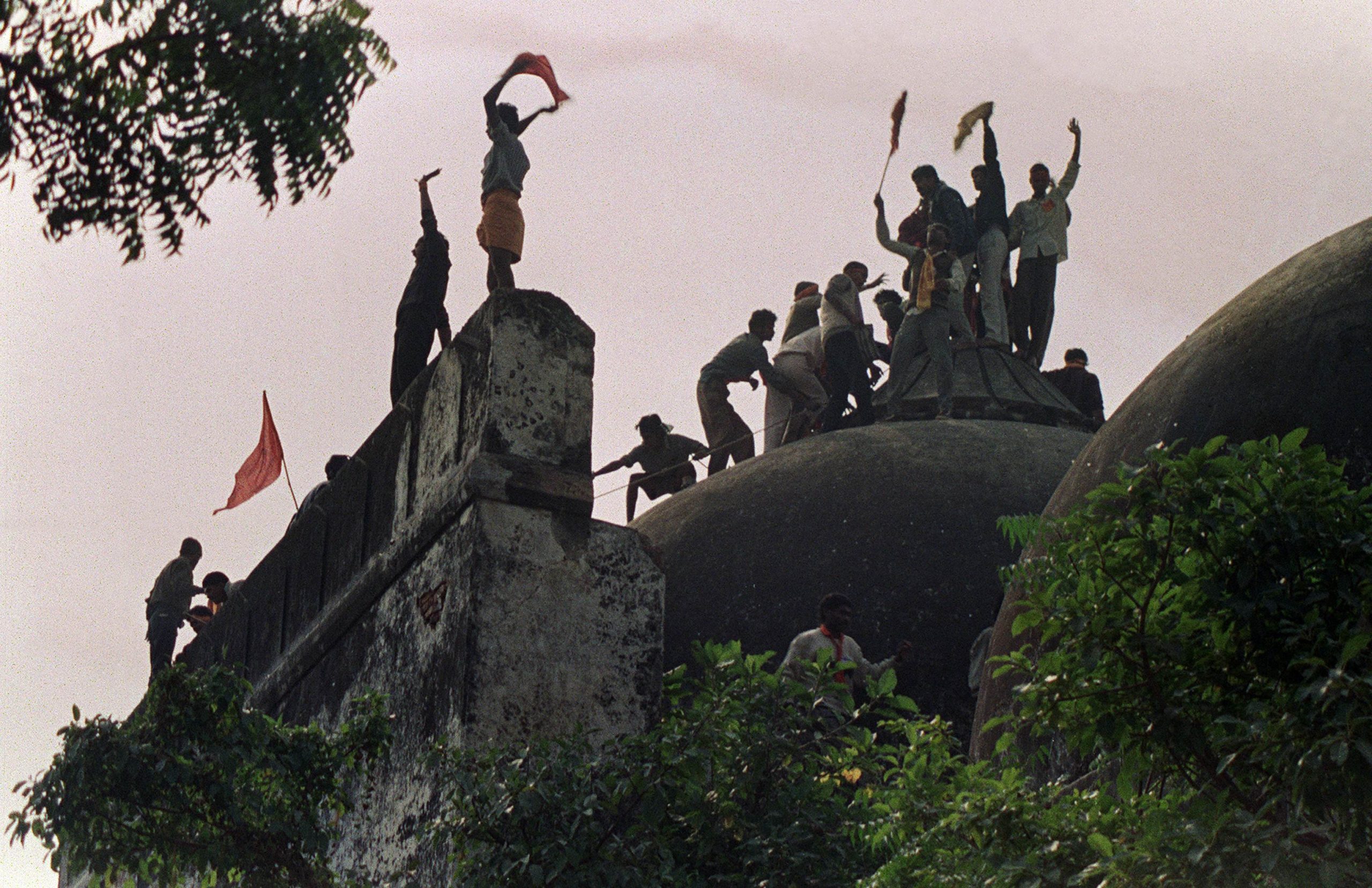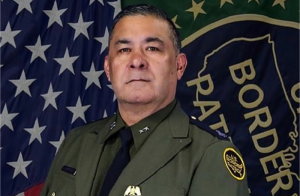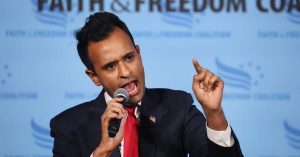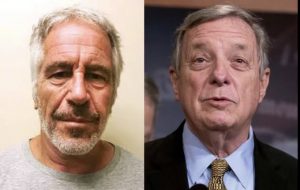“How many metres away were you standing from the Babri mosque on December 6, 1992 and in what direction were you from that disputed structure in Ayodhya?”
Nearly two decades after the fateful day, this question was fired at me (as 14th of the 137 key witnesses) in 2011 by none other than former Deputy Prime Minister Lal Krishna Advani’s legal counsel Mahipal Aluwalia, during the course of my cross-examination in a dingy Rae Bareli court, holding trial of Advani and seven other prominent BJP and Vishwa Hindu Parishad (VHP) leaders, charged of criminal conspiracy behind the demolition of the 16th century mosque.
My reply was plain and simple – “well if I knew that you would pose this question to me 19 years later, I would have carried a measuring tape and a compass to know the exact distance and the direction.
Not amused by my reply, the lawyer threw a fresh volley of questions – “what was the name of the building from where you watched the entire demolition scene? ; whether the building was a single-storeyed one or double-storeyed ; whether there was a VHP office in the building ; what route did I take to reach the Babri Mosque on that day ; the names of buildings that I passed ; how many security gates did I have to pass ; whether the karsewaks wore some identification badges …… so on and so forth.”
Twenty-eight years on, today Ayodhya is all decked up for the mega event of launch of construction of the much-awaited Ram temple on August 5, when prime minister Narendra Modi performs the ‘bhoomi pujan’. Ironically, the trial court was still far from nailing down those who were responsible for bringing down the mosque. Cases against 48 key accused persons was going on in two separate special courts – one in Rae Bareli and the other in Lucknow.
And what I had seen was still vivid and clear to me. Tens of thousands of ‘karsewaks’ drawn from different corners of the country had converged in the tiny ancient temple town and were sprawling all over its narrow lanes and bylanes. And all roads seemed to be leading towards the 16th century mosque which was like an eyesore for them – and sure enough they had no qualms about making it loud and clear that they were there to pull it down.
Their mission was spelt out in their oft repeated slogans– “ek dhakka aur do, Babri Masjid tor do”(give one more push and bring down the Babri Mosque) ; “Ram Lalla hum aaye hain, mandir yahin banayenge” (Ram, we have come to build your temple here).
As per the officially declared program, karsewaks were to march in batches up to the Saryu river banks, pick up a fistful of sand and then dutifully drop the sand on the cemented platform in front of the Babri Masjid. But what was happening on ground was far different as karsewaks gatecrashed into the outer precincts of the mosque in such large numbers that even the VHP volunteers guarding the gates to regulate the crowds soon got outnumbered and overpowered.
First a clash ensued between karsewaks and the VHP volunteers, but when photo journalists started clicking pictures of that confrontation, media became the common target of both. What followed was the infamous manhandling of press photographers, who were heckled while their cameras were smashed or snatched.
By then it was a free for all and a whole lot of karsewaks were already seen scaling the tall walls of the mosque to get atop the three domes of the mediaval structure. Significantly and to the shock of everyone , khakhi-clad UP cops on duty only added fuel to fire. They were seen openly encouraging Karsewaks to head towards the mosque and soon . CRPF jawans who were much fewer in number and guarding the inner quarters of the mosque had no option but to flee from the scene under the leadership of their DIG.
Then came an important announcement on the public address system installed just a short distance across the mosque – where all VIPs including Lal Krishna Advani, Murli Manohar Joshi, Uma Bharti and other saffron bigwigs were perched comfortably. “All of you who are on top of the domes , please come down as this structure is about to fall”, was the repeated announcement that was translated in several vernaculars. Sure enough the instructions were quite dutifully carried out.
It was here that some visibly trained people took charge of the scene. Armed with pick-axes, they occupied both sides of the outer walls of the structure and started digging into the thick walls at the plinth level. Once they had succeeded in narrowing down the 2 – 2.5 ft think walls, they dug holes in the walls , and pushed thick ropes through the holes . The far end of each rope was left hanging far below (Babri Masjid was built on a mound) for hundreds of aggressive volunteers to pull . The already narrowed down and weakened walls just gave way with every strong pull , bringing down the wall in a matter of minutes. The same formula was followed with each wall , thereby making it easy for each dome to crash with a thud. It was that technique that enabled the demolition of entire mosque in less than four hours. Any other routine procedure could have taken at least a week to accomplish the same task.
Coming back to the court proceedings, my cross-examination that ran for 10 days in Rae Bareli and four days in Lucknow (with the recorded text running into as many as 88 hand-written pages) seemed more like a test of my memory rather than any confirmation of how the mosque was pulled down.
But when I embarked upon spelling this out by drawing the court’s attention to the fact that the lawyer and his team were only testing my memory , he screamed his lungs out – “now this is contempt of court.”
All I had done was to raise a pertinent question – where was the equity in law when lawyers on both sides remained armed with documents, files and anything else under the sun, while every witness was expected to have a super-human memory to remember every distinct detail of whatever he had seen two decades ago.
What I could not understand was why Indian courts generally believed in seeing a witness as a liar and the whole idea behind cross-examination was to prove that. I could not resist telling the open court that from the proceedings it was quite apparent that lawyers were probably more used to dealing with tutored witnesses . And therefore, they found it difficult to come to terms with a true “chashmadeed gawah” (eye-witness) who had watched from very close quarters , the entire series of events on that ”black Sunday” of December 6, 1992 , when violent mobs described as ‘karsewaks’ from different corners of India brought down the sturdy 16th century Babri Masjid in a matter of few hours.
Later, I was advised not only by the lawyers but even by the presiding officer to bear with the way things were as that was how the practice had been for decades and decades . And since law does not discriminate, the legal procedures and practices remained the same irrespective of the nature of the crime – be it theft in the neighbourhood, murder on the street, trespass into the property of a neighbour or the demolition of a historic mosque that had changed the communal and political destiny of the world’s largest democracy.
The court in Rae Bareli was holding the trial against Advani and seven others prominent Bhartiya Janata Party (BJP) and Vishwa Hindu Parishad (VHP) leaders – Murli Manohar Joshi , Uma Bharti, Vinay Katiyar, Sadhvi Rithambara ,Ashok Singhal, Acharya Giriraj Kishore and Vishnu Hari Dalmia – for “inciting communal hatred in the name of the Ramjanmbhoomi-Babri Masjid issue.”
The Lucknow special court began trial against 40 others of the saffron brigade who were charged of “hatching the conspiracy” for the demolition. Of these 13 were discharged by the court against which CBI was contesting in a higher court.
While two of the eight accused in the Rae Bareli case had passed away during its pendency five of the accused in the Lucknow case died over the years , thereby leaving the prosecution proceedings now pending only against 22.
Believe it or not , but in all these years , the court had failed to record statement of not more than 57 of the 137 prosecution witnesses in the Rae Bareli court after which it decided to abandon the other witnesses. Likewise, as against 892 witnesses listed before the Lucknow court , statements of only 294 were recorded. Following an order of the Supreme Court in 2017, proceedings of the two courts were merged and were being carried out in Lucknow now.
Yet, the legal procedure ,that could not actually take off before 2005 , is still far from over. The court has just finished recording statements of the each of the accused persons . It is currently in the process of recording the evidence of the defence side. which would be followed by final arguments from both sides The court verdict will come thereafter.
Such was pace, when the trial was being held in special courts . How is justice dispensed in routine courts could therefore be anybody’s guess?
Interestingly, even a parallel investigation ordered by the then Prime Minister PV Narasimha Rao , two weeks after the demolition of the mosque on December 6, 1992 , in the form of a judicial commission took 17 long years . Retired High Court judge MS Liberhan ,who was nominated as the one-man commission on December 16, 1992 to go into various aspects of the demolition and asked to complete the task in three months , took as many as 40 extensions . Both before and after he submitted his report on June 30, 2009 , Justice Liberhan came under severe criticism, even as he categorically held the then UP BJP chief minister Kalyan Singh and the entire saffron brigade as squarely responsible for the act.
Could there be a more apt example of the old saying – “Justice delayed is justice denied”? Already, a generation has moved on and who is interested in the case – other than political animals who have their own axe to grind?
Who knows how many of the accused and witnesses would still be there to hear the final judgement?
What looks certain today is that Ram Mandir will soon be a reality at the spot where Babur erected the Mughal mosque. But, whether the verdict in the mosque demolition case would hit the headlines in 20… something will continue to remain a million dollar question.
Sharat Pradhan is a senior journalist based out of Uttar Pradesh, with a standing of more than four decades. He has, in the past, worked with Times of India, Reuters, Outlook and is now a freelance contributor for BBC, Sunday Observer, Sunday Mail, and many other big media houses.







